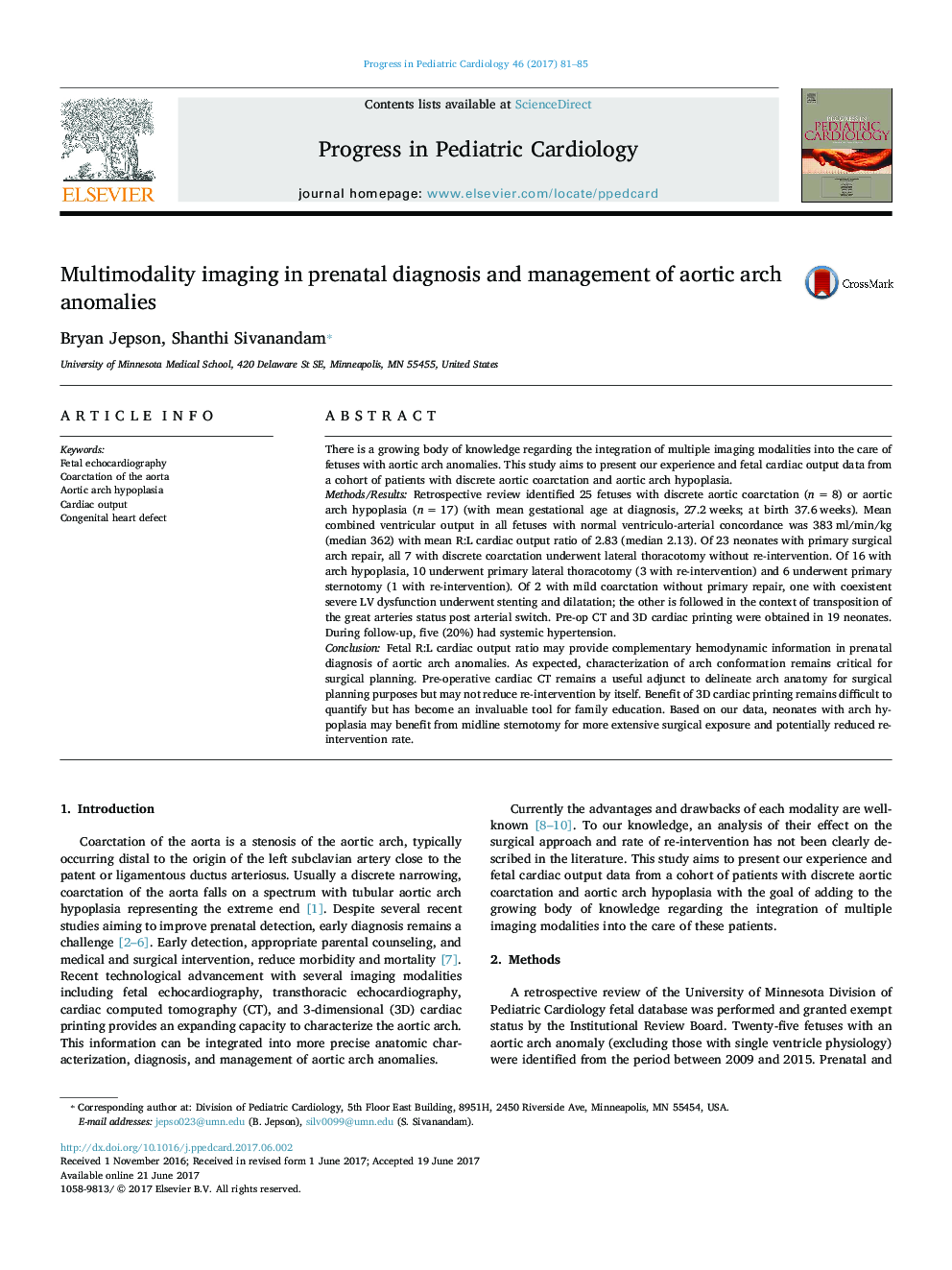| Article ID | Journal | Published Year | Pages | File Type |
|---|---|---|---|---|
| 5619691 | Progress in Pediatric Cardiology | 2017 | 5 Pages |
â¢Fetal R:L cardiac output ratio may provide complementary hemodynamic information in aortic arch anomalyâ¢Pre-operative CT and 3D cardiac printing remain useful adjuncts for pre-operative anatomic arch characterization and family educationâ¢Neonates with arch hypoplasia likely benefit from midline sternotomy for wider intra-operative exposure and potentially reduced re-intervention rate
There is a growing body of knowledge regarding the integration of multiple imaging modalities into the care of fetuses with aortic arch anomalies. This study aims to present our experience and fetal cardiac output data from a cohort of patients with discrete aortic coarctation and aortic arch hypoplasia.Methods/ResultsRetrospective review identified 25 fetuses with discrete aortic coarctation (n = 8) or aortic arch hypoplasia (n = 17) (with mean gestational age at diagnosis, 27.2 weeks; at birth 37.6 weeks). Mean combined ventricular output in all fetuses with normal ventriculo-arterial concordance was 383 ml/min/kg (median 362) with mean R:L cardiac output ratio of 2.83 (median 2.13). Of 23 neonates with primary surgical arch repair, all 7 with discrete coarctation underwent lateral thoracotomy without re-intervention. Of 16 with arch hypoplasia, 10 underwent primary lateral thoracotomy (3 with re-intervention) and 6 underwent primary sternotomy (1 with re-intervention). Of 2 with mild coarctation without primary repair, one with coexistent severe LV dysfunction underwent stenting and dilatation; the other is followed in the context of transposition of the great arteries status post arterial switch. Pre-op CT and 3D cardiac printing were obtained in 19 neonates. During follow-up, five (20%) had systemic hypertension.ConclusionFetal R:L cardiac output ratio may provide complementary hemodynamic information in prenatal diagnosis of aortic arch anomalies. As expected, characterization of arch conformation remains critical for surgical planning. Pre-operative cardiac CT remains a useful adjunct to delineate arch anatomy for surgical planning purposes but may not reduce re-intervention by itself. Benefit of 3D cardiac printing remains difficult to quantify but has become an invaluable tool for family education. Based on our data, neonates with arch hypoplasia may benefit from midline sternotomy for more extensive surgical exposure and potentially reduced re-intervention rate.
